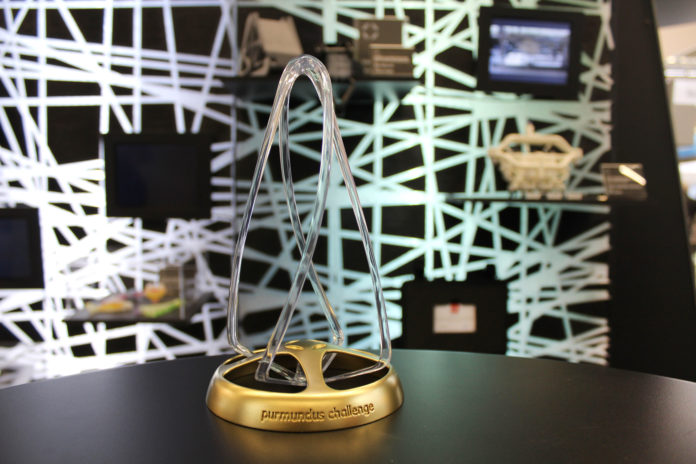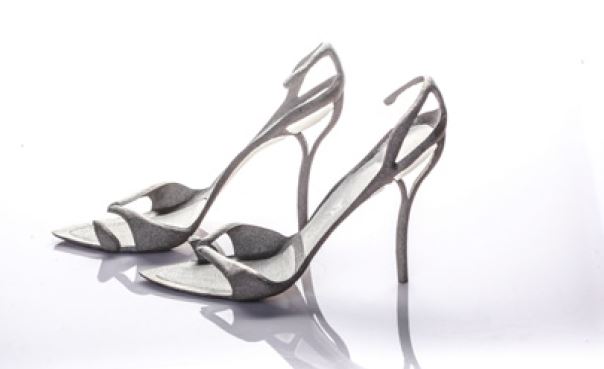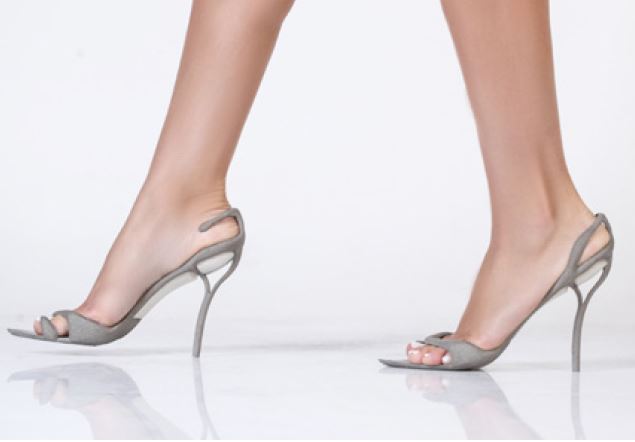The 2020 edition of the Purmundus Challenge reveals unrivalled ideas from creative minds that explored the potential of 3D & 4D Printing technologies. For this 2020 edition, participants from 13 countries on 5 continents compete under the motto “Geometry and Material in Harmony”.
Today, 35 finalists now stand a chance of winning the purmundus challenge trophy. The jury of this competition will appreciate each creation in terms of use, economy and aesthetics as well as design & innovation.
Winners will be given their awards on November 11th, 2020 (awards that are worth a total of 30,000 euros). In the meantime, as from today, we are going to release the creations that spark the most our interest:
Titanium Skeleton by Nadin Ram
Footwear designer Nadin Ram collaborated with the Israeli Institute of Metals, the Technion for the fabrication of this pair of heels.
“The ‘skeleton look’ in my heel shoe collection truly accentuates my fantasy of being ‘born in heels’ as they are the integral part of a woman’s body. My collection uses anatomical and minimal structures which is printed in titanium for the purpose of ‘lifting’ and holding the foot in a high heel position. what connects between the foot and a titanium skeleton is an ‘anatomical foothold’ of a printed polymer that’s transparent to the human foot. The ‘tailor made foothold’ is mechanically separated into the titanium skeleton which can be replaced and exchanged to different colors, textures,or customizations in the sense of a soft and hard feel”, Nadin Ram said.
The heels are produced on an Electron Beam Melting SYS system, using Titanium Ti-6AI-4V & polymer PLA.
MX3D Robot Arm
Metal 3D printing company MX3D has printed an optimized industrial robot arm, designed by engineers at Altair and a robot supplied by ABB. The project was unveiled last year at Formnext 2019. As a reminder, the robot arm is fully 3D printed in stainless steel using an advanced version of MX3D’s WAAM technology. This technology features advanced geometry processing which allows complex organic geometries to be printed upright.
Legendary Vish in the 3D Food Printing Industry
Legendary Vish, the start-up that is on a mission to promoting vegan alternatives to salmon and tuna competes with their 3D printed fish and sushi made from plant proteins such as mushroom or algae.
Eva, the modern aquaponics furniture
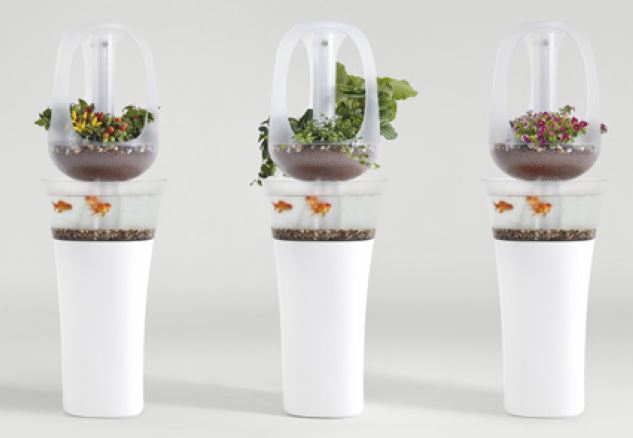
Designed by François Hurtaud, Eva finds its place in restaurants, hotels, schools or offices. It is a guarantee of fresh food, a place of gathering, a light source full of life.
It was designed so that the different parts simply dovetail with one another and let gravity do the work, no tools are required. Both the garden and the fishtank share a commun source of light, floating at the very core of the product. The frosted finishing combined with the extruded facets serve at optimizing the light diffusion. Mimicking a natural environment, the light switches on and off softly at dawn and dusk.
The furniture comes with an app, which enables the user to control, time and automate the water pump, air pump, and the lighting. By default, in order to mimic a natural environment, the light switches on and off softly at dawn and dusk. Data fetched via sensors such as temperature, humidity, pH and light help the user to monitor its activity.
The choice of a frosted finishing serves two purposes. One is that the fish and plant appreciate is a subtle intimacy. The second is that the delicate texture combined with the extruded facets enhance the light diffusion. The fauna and flora as well as their observers enjoy a homogenous lighting.
Jellyfish Barstool, VIADESCON Designkonzeption & -beratung I Rico Knöll
In its organic structure, the Jellyfish Barstool relies on the advantages of 3D printing: the wide base does not allow the chair to tilt and requires seamless connections in the struts of the support structure. In the upper area, the crossing struts build on the stable layer structure in 3D printing, which fuses the individual struts centrally into one another and yet lets them appear individually. For the material, 3D filament made from recycled Ocean Plastic is to be used – a filament made of HDPE can already be obtained, whose dimensional stability and properties would be very well suited for production.
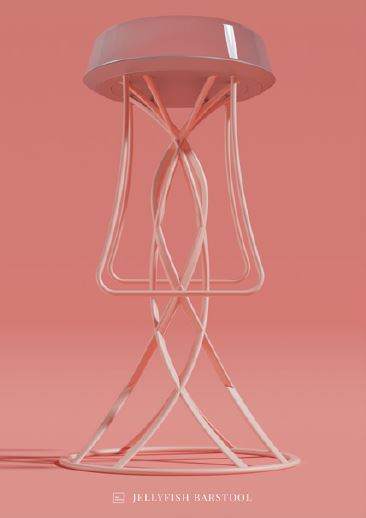
Remember, you can post free of charge job opportunities in the AM Industry on 3D ADEPT Media or look for a job via our job board. Make sure to follow us on our social networks and subscribe to our weekly newsletter : Facebook, Twitter, LinkedIn & Instagram ! If you want to be featured in the next issue of our digital magazine or if you hear a story that needs to be heard, make sure to send it to contact@3dadept.com



